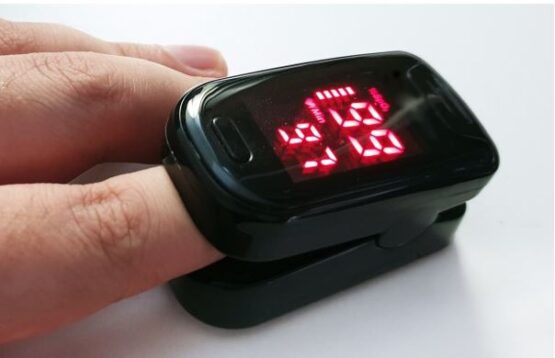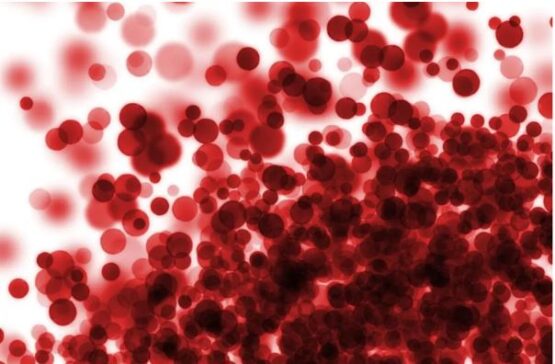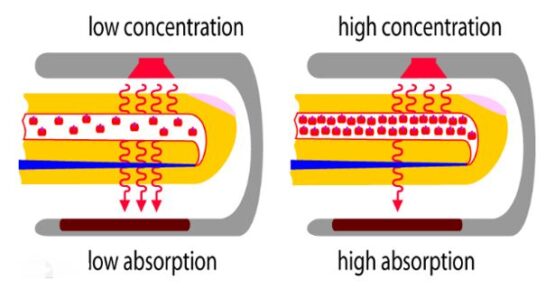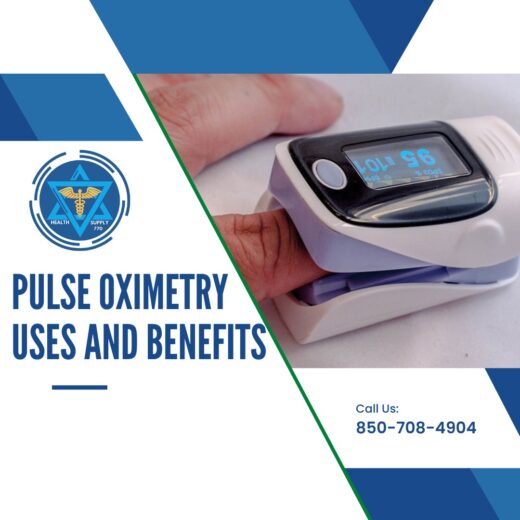Besides glucose and the ATP synthesized after its metabolism, another chemical entity stands alone in making the body capable of continuing the chemical processes necessary to support life-the oxygen. Oxygen molecules, extracted from the air and attached to the hemoglobin of the red blood cells (RBCs) by our lungs, penetrate deep into the cellular components to carry out the glucose metabolism via aerobic respiration thus preparing adenosine triphosphate, commonly known as ATP, the energy currency of the body along with water, carbon dioxide and some heat. Normal oxygen levels when the RBCs are completely saturated fall between 95 to 100%. If the blood oxygen level falls below 89%, all these reactions come to halt eventually resulting in diminished energy and in the worst cases, tissue and organ death. Hence, it is crucial to maintain the required oxygen level in the blood which may need monitoring using a fingertip pulse oximeter.
Pulse oximetry is a non-invasive method used for the measurement of oxygen levels in the blood. For this purpose, simple clip-on-devices called pulse oximeters or pulse ox are used. By clipping these to a finger, foot, wrist, earlobe, toe, or any other area, the oxygen levels can be read.

An oximeter showing the patient’s oxygen saturation and pulse rate
Reasons for poor oxygen saturation
The following factors may be attributed to the declining oxygen levels in the blood:
- Suffocation due to inhaling a poisonous gas
- Suffocation due to a severe respiratory tract infection such as COVID-19 or pneumonia
- Drowning
- Allergic reactions
- Bronchitis
- Acute respiratory distress syndrome (ARDS)
- General anesthesia
- Disease states such as lung cancer or emphysema
- Heart attack or heart failure
- Congenital heart defects
- Congestive heart failure
- Chronic obstructive pulmonary disease (COPD)
- Sleep apnea (Sleep disorder with disturbed breathing)
- Pulmonary hypertension
- Pulmonary embolism (Presence of freely moving blood clots in the lungs)
- Pneumothorax (Presence of air around your lungs)
- Lower oxygen levels in the environment i.e. near the higher altitudes

Red blood cells (RBCs) saturated with oxygen as indicated by their bright red color
Indications of having poor oxygen saturation
The following signs can indicate poor oxygen levels or hypoxemia in a subject:
- Chest tightness
- Headache
- Wheezing
- Confusion
- Pain and discomfort in the chest area
- Difficulty while breathing i.e. dyspnea
- Abnormally high breathing rate
- Elevated heart rate i.e. tachycardia
- Bluish appearance of skin, nails, or lips i.e. cyanosis
- Constant cough which keeps on worsening from time to time
- Restlessness
- Above normal pulse rate
Working with a pulse oximeter
The pulse fingertip oximeters work by detecting the oxygen levels in a relatively transparent area on the body part they are clipped on. This is done when a light beam is shone by the oxygen oximeter on one area which is detected back through a detector placed on another point. The amount of light absorbed by the blood has a direct proportion to its oxygen levels.

A pulse oximeter attached to a fingernail is passing the red and infrared light through the tissue which is being detected by the photodetector

Image showing the blood oxygen concentration and the amount of light absorbed
How to take a reading using a pulse oximeter
A finger or pulse oximeter should be used in the following steps to obtain a reading accurately:
- Any jewelry or nail paint must be removed before taking a measurement.
- The temperature of the hand on which the device is to be clipped must be warm.
- Keep the hand below the heart level.
- Clip the oximeter to the finger. It will show the oxygen saturation reading within seconds.
- Note down the reading and unclip the device.
Applications of pulse oximetry
Fingertip oximetry is useful to evaluate the oxygen levels in patients with:
- Heart failure
- Heart attack
- Anemia
- Lung cancer
- Pneumonia
- Chronic obstructive pulmonary disease (COPD)
- Asthma
- Congenital heart disease
In addition to these, pulse oximeters can also help in the following cases:
- To evaluate the efficacy of a new medication
- To diagnose sleep apnea
- To analyze the capability of a subject to respond to increased physical activity
- To assess the performance of a ventilator
- To evaluate if a patient is in need of a breathing aid
- To quantify the performance of supplemental oxygen
- To quantify the patient’s oxygen levels during surgery
- To measure the pulse rate of an individual
Demerits of using an oximeter
Although it is easy to obtain the best pulse oximeter readings with almost every use, these devices do possess some disadvantages as well:
- Chances of an incorrect measurement in cases if the device falls off the finger.
- The patient may experience irritation in the area where the oximeter is clipped.

Skin irritation due to using a pulse oximeter
Limitations of oximeters
Factors that can fluctuate the pulse oximeter readings are as follows:
- Plasma lipid levels
- Bilirubin levels
- Pulse changes
- Dirt trapped in the fingernail
- Long fingernails
- Poor blood circulation
- Tobacco use
- Coldness of the extremities
- Interference by the light coming from external sources
- Interference by colored chemicals i.e. nail paints
- Poisoning of carbon monoxide
- For darker skin tones i.e. In African-Americans, the readings of the oxygen levels shown on the oximeter may be a little different from the actual oxygen saturation in the body
Conclusion
Pulse or fingernail oximeters are non-invasive devices used to quantify the oxygen levels of the blood. These play an important role in patients’ well-being as their falling oxygen levels can be easily checked and managed immediately. These are inexpensive and easily accessible devices that are highly user-friendly owing to their simple method of use. Moreover, these are small, compact, and above all, portable which makes it even easier for the patients to carry them all the time thus making these the most preferred and frequently used oxygen measurement devices.

PhD Scholar (Pharmaceutics), MPhil (Pharmaceutics), Pharm D, B. Sc.
Uzma Zafar is a dedicated and highly motivated pharmaceutical professional currently pursuing her PhD in Pharmaceutics at the Punjab University College of Pharmacy, University of the Punjab. With a comprehensive academic and research background, Uzma has consistently excelled in her studies, securing first division throughout her educational journey.
Uzma’s passion for the pharmaceutical field is evident from her active engagement during her Doctor of Pharmacy (Pharm.D) program, where she not only mastered industrial techniques and clinical case studies but also delved into marketing strategies and management skills.
Throughout her career, Uzma has actively contributed to the pharmaceutical sciences, with specific research on suspension formulation and Hepatitis C risk factors and side effects. Additionally, Uzma has lent her expertise to review and fact-check articles for the Health Supply 770 blog, ensuring the accuracy and reliability of the information presented.
As she continues her PhD, expected to complete in 2025, Uzma is eager to contribute further to the field by combining her deep knowledge of pharmaceutics with real-world applications to meet global professional standards and challenges.








